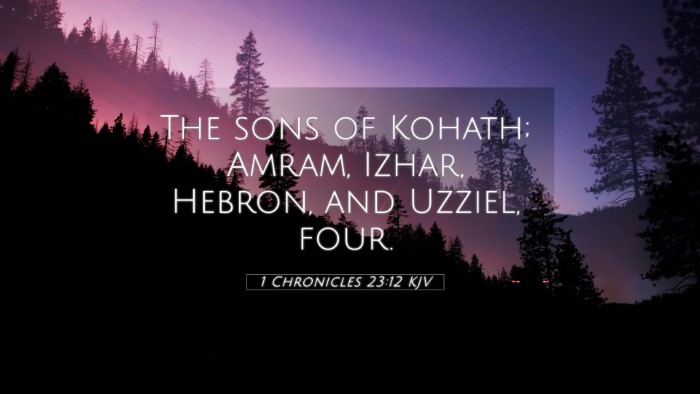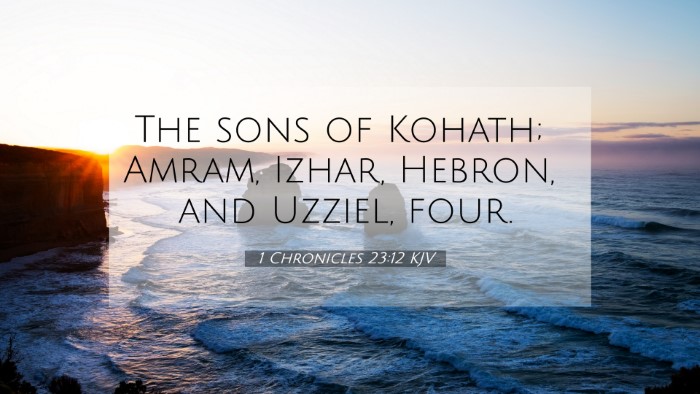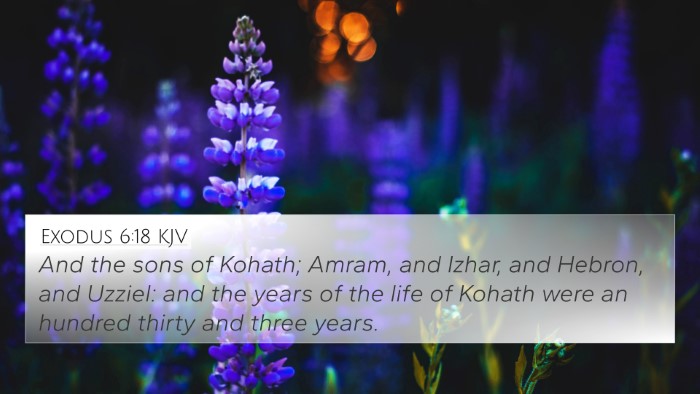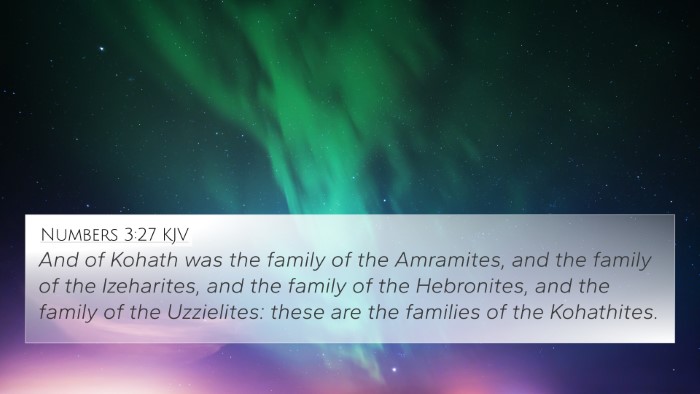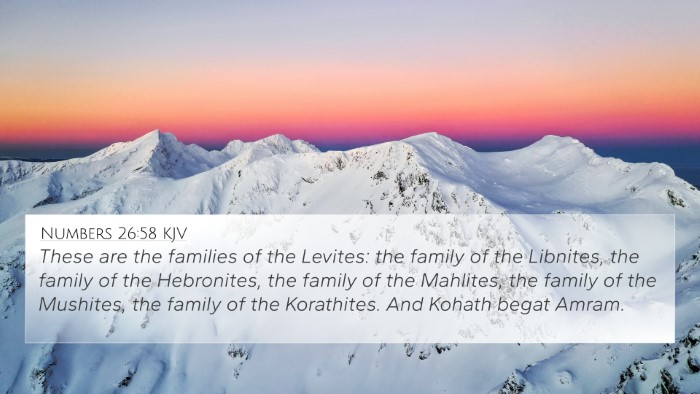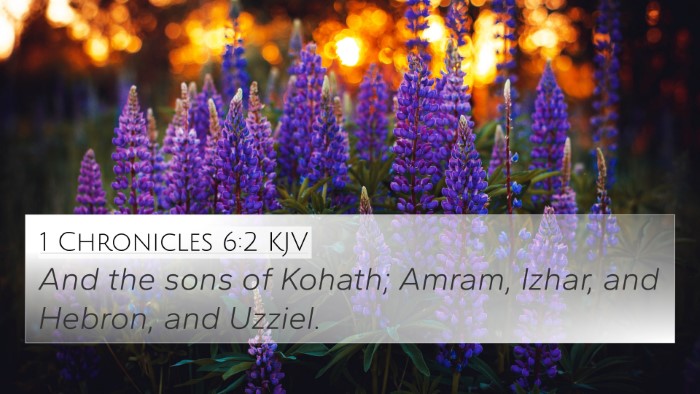Understanding 1 Chronicles 23:12
1 Chronicles 23:12 states: "And the sons of Levi; Gershon, Kohath, and Merari." This verse serves as a significant marker in the genealogical list of the Levitical family and their respective divisions, which play a crucial role in the religious service assigned to the Levites.
The passage highlights the three major branches of the Levites, each of whom contributed uniquely to the worship and practices established in the Israelite community. Understanding this lineage provides insight into the structure of worship in ancient Israel.
Commentary Insights
-
Matthew Henry:
Henry emphasizes the importance of the Levitical order. He notes that these divisions were not arbitrary; they reflect God’s divine plan for service and duty within the temple. Each group had distinct responsibilities, showing a harmonious structure within the community that worshiped God.
-
Albert Barnes:
Barnes points out that the mention of Gershon, Kohath, and Merari establishes continuity from earlier texts. He connects this genealogy to prior scriptures to show how the Levites maintained their sacred duties through generations. This continuity was pivotal in preserving the teachings and rituals of the faith.
-
Adam Clarke:
Clarke elaborates on the character of these Levitical families. He mentions that their roles were vital in maintaining the purity of worship. Moreover, he provides reflections on how the Levites' duties foreshadow the New Testament ministry, emphasizing a greater spiritual service that continues today.
Significance of the Levitical Lineage
The listing of the sons of Levi not only serves a historical purpose but also offers a spiritual framework. It illustrates how God organized His people for worship and service. Each tribe’s functions were essential for communal worship, reflecting how God desires order and holiness among His followers.
Cross-References and Connections
This verse connects with various other biblical passages that illuminate its meaning and underscore its significance:
- Numbers 3:17-18: This passage details the families of the Levites, paralleling the lineage established in 1 Chronicles.
- Exodus 6:16-20: This genealogy further deepens the historical context of Levi's descendants and their roles.
- Deuteronomy 10:8: Discusses the Levites' covenant responsibilities, enhancing the understanding of their sacred duties.
- 1 Chronicles 24:1-3: Devotes further detail into the divisions of the priestly service among the sons of Aaron, emphasizing structural organization.
- Hebrews 7:14: Builds on the theme of priesthood from the tribe of Levi, leading to the comparison with Christ's priestly role.
- 2 Chronicles 29:34: Offers insights on the Levites' involvement in temple services and cleansing rituals.
- Luke 10:32: Though not directly related, this verse can be echoed as it discusses roles in service—an overarching theme connecting the past and present.
Conclusion
In light of these reflections and cross-references, 1 Chronicles 23:12 underscores the importance of heritage and divine calling. It serves as a reminder of the structured nature of worship in Israel. Each family within the Levitical line had designated responsibilities, ensuring the faithful performance of God’s commandments over generations. Such understanding allows modern readers to appreciate both the historical context and the enduring significance of these roles in a contemporary faith community.
Thematic Bible Verse Connections
The themes of duty, lineage, and service found in 1 Chronicles 23:12 resonate throughout scripture. By exploring these connections:
- Faithfulness: Illustrated through the continued service and roles assigned to the Levites across generations.
- God’s Order: Evident in how duties and responsibilities were clearly defined amongst the tribes.
- Covenantal Relationships: Connected through the obligations of the Levites to uphold God’s law and serve His people.

